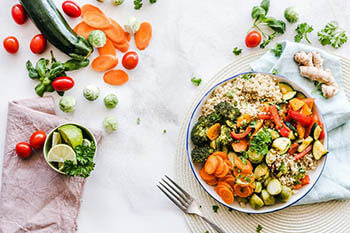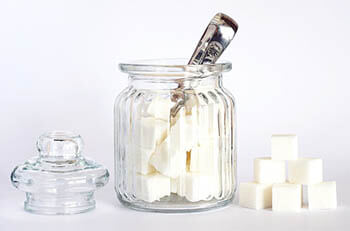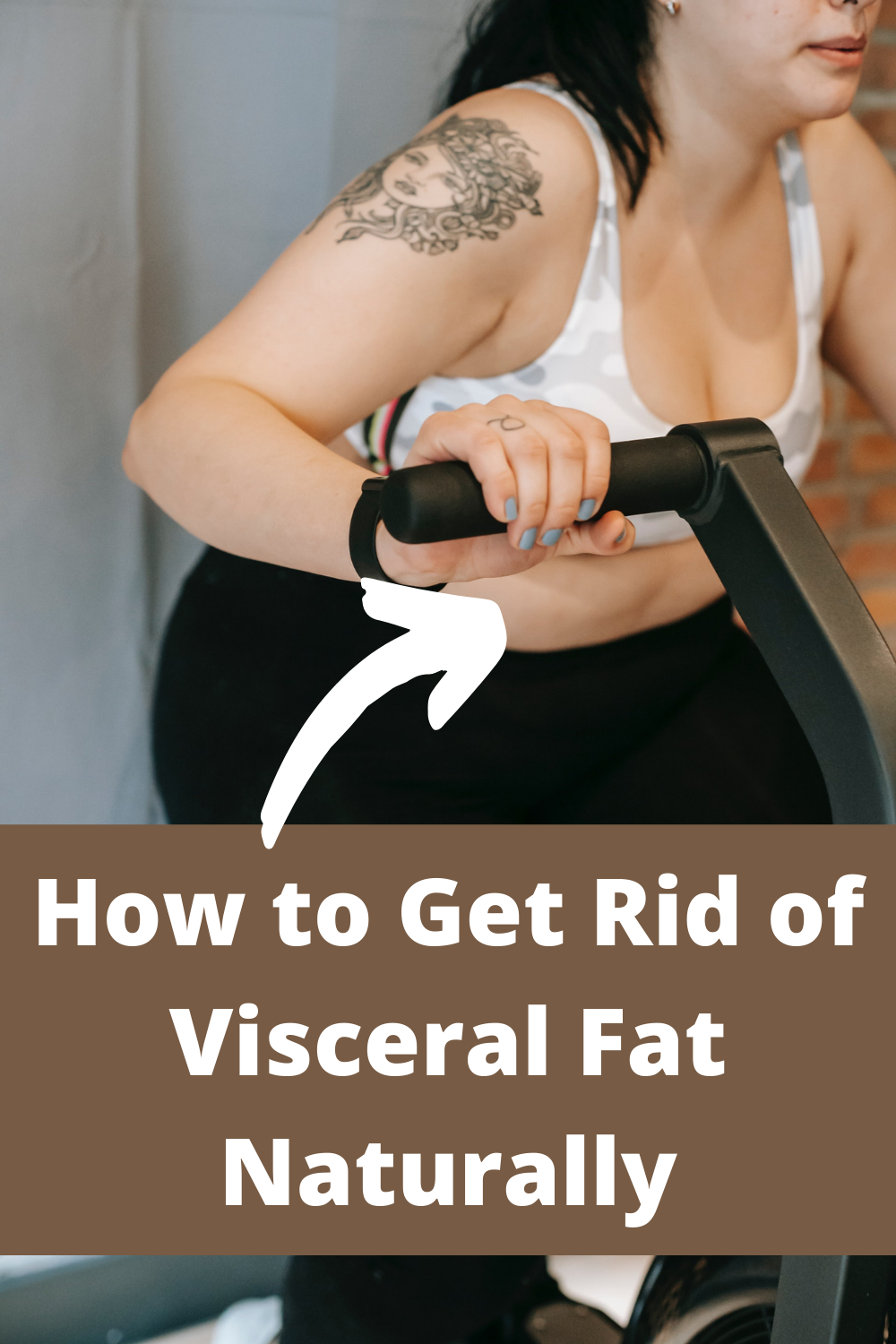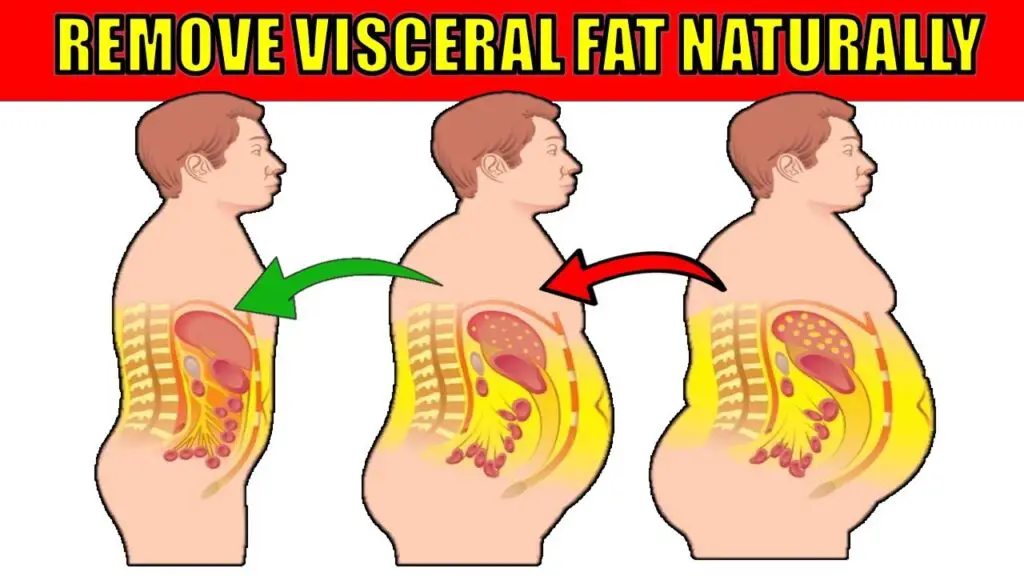Nowadays, it may be hard to keep up with the latest opinions on body fat. General opinion seems to fluctuate between "no fat is good fat" to "all fat is just fine". As you may well have figured out, both of these opinions are wrong. Humans do need a little fat for a minimum standard of health, and a healthy diet should contain some fat. Each individual's body is different, and each person is shaped differently. Even the dreaded belly fat really isn't such a big deal.
Of course, we now know that obesity can lead to long-term health problems. Some people also find their excess fat to be physically unappealing. But there's a far more worrying problem with excess fat - it could be causing damage to your health. We're talking about visceral fat.
Visceral fat is something different from subcutaneous fat, which means body fat that gathers under the skin. If you're confused as to what visceral fat really is, read on. We'll discuss what it is, the dangers it poses, and how to reduce visceral fat.
What Is Visceral Fat?

Visceral fat is often confused with straightforward fat, which forms under the skin and is generally harmless. This kind of fat is visible, known as subcutaneous fat. It's easy to see and you can pinch it with your finger. This is the fat that makes us buy clothes the next size up.
Visceral fat, however, is a little more serious. Visceral fat is technically body fat, but it forms in the abdominal cavity. This is internal fat.
This means that this kind of fat is forming around your organs. The liver, stomach, intestines, and even the arteries may become clogged and smothered by visceral fat. Most worryingly of all, visceral fat can't always be seen.
Dangers of Visceral Fat
It's clear that fat gathering around the internal organs is going to cause health problems. While a little fat usually isn't an issue, too much may indicate a risk of visceral fat. This can cause a number of problems:
- Greater risk of type 2 diabetes
- Higher blood pressure
- High blood sugar
- Greater risk of stroke, heart attacks, or heart disease
- Greater risk of some cancers
The accumulated abdominal fat may also cause issues with the organs in particular. If your waist reaches a certain measurement (approximately 35 inches for women and 40 inches for men) you may be at a greater risk for visceral fat.
Natural Ways to Lose Visceral Fat
The number one way to get rid of excess visceral fat is to make lifestyle changes. Weight loss of any kind is never easy and generally requires more than one method.
For example, exercise and dietary changes are normally used together for the best results. You will need to have patience. Remember, sustainable weight loss tends to go slowly. Ideally, you should be losing no more than 1-3 pounds a week. This means that progress may be slow, but you're more likely to keep your fat off - both internal and external.
Of course, it's hard to monitor visceral fat without help from a medical professional. However, losing too much weight from your body may be a good indicator that you're losing dangerous abdominal fat, too.
If you already have health problems that inhibit what dietary changes you can try or what amount of activity you can do, losing visceral fat could be a little tricky. If you're not sure what your options are, talk to your doctor or to a nutritionist.
As an individual, you may need to try a few different methods to work out what is best for you. Don't be afraid to experiment, or splice different ideas together.
1. Eat a Healthy Diet

Eating a healthy, balanced diet is crucial to external and internal weight loss. Unfortunately, processed junk food tends to be cheaper, easier, and more accessible than healthful options. Coming home tired from a long day at work is a perfect recipe for just giving in and eating junk food.
When it comes to making meals for your family, it's difficult to choose one with all of the three necessities: delicious, healthy, and easy to make.
If you're struggling to eat well, making a meal plan could be a good idea. Planning out a week's meals in advance can help you stick to your goals. It's also a good way of making sure you get enough nutrients, vitamins, and minerals every day.
Opinions on what we should and shouldn't eat change all the time. Fat-free options, for example, are generally packed with sugars. Sugar-free options, on the other hand, often contain other artificial sweeteners. These sweeteners are often even worse for you.
So, let's take a brief overview of the classics.
Eat More...
Fruit and vegetables
Fruit and veggies will never go out of style. Packed with vitamins and nutrients, it's always a good idea to eat more fruit and veg. If you're trying to cut down on sugars, fruit or homemade juices and smoothies may provide a sugary kick to keep you going.
Eat more fiber
Fiber is extremely good for the digestive system. It adds bulk to stools, keeping us regular. It also nourishes the intestines and colon on its way out. Fiber is a key element if you want to reduce fat around the middle, since it suppresses the appetite, leaving you feeling fuller for longer.
Eat more protein
Protein is something else that suppresses the appetite. Of course, suppressing your appetite is going to be harmful if you aren't taking in enough nutrients to provide you with enough energy. Foods rich in protein give you energy and keep you nourished. Good protein source include eggs, meats, nuts, legumes, beans and dairy.
Eat less...
Sugar

Sugar is in most of the foods we eat, including fruit and vegetables. However, added sugars, especially that in refined grains, can quickly be turned into fat in our bodies, causing visceral fat to build up. Added sugars provide no nutrients or vitamins, but does carry plenty of calories.
Additionally, sugar is addictive. Sugar cravings are extremely difficult to beat and cause a serious obstacle to losing fat around your waist.
Alcohol
In moderation, alcohol is fine. However, alcohol does contain sugars and calories. Drinking too much alcohol has been linked to higher amounts of visceral fat. It can also cause other long-term health problems.
Trans fat
Trans fats are used in processed foods to make them last longer. Trans fats are created by adding hydrogen to vegetable oils and are generally considered very unhealthy.
2. Restrict your Calorie Intake
You may be eating a healthy, balanced diet, but none of that will do you any good if you're eating too much. Visceral fat loss is achieved by working off the calories you take in from food during the day, whether by exercise or calorie restrictions.
The recommendation is approximately 2000 calories a day for women, and 2500 for men. Of course, these are rough estimates. You should take your individual needs and metabolism into account. If you're ill or lead a very active lifestyle, you may need more calories.
3. Exercise Regularly

Cardio, or aerobic exercise, is one of the best healthy habits for fat loss. Regular cardio is a great way to reduce visceral fat. Cardio includes brisk walking, jogging, and running. Swimming can also be a handy method of physical activity. This allows you to start at a level you're comfortable with and work up.
It's possible that your health doesn't allow you to do much exercise, in which case you'll need to focus more on diet. However, if you're able, a brisk walk can give you a good cardio workout and help you burn calories.
Ideally, you should engage in cardio at least two or three times per week. Resistance training and strength training will also help you to reduce body mass index. For the best fat loss results, it's good to exercise for around 30 minutes a day. However, if you're engaging in long workouts or high-intensity workouts, you'll need to allow at least one rest day a week to let your muscles recover.

4. Reduce Stress Levels

Now, reducing stress levels is easier said than done. However, when our bodies are under stress, they produce the stress hormone known as cortisol. Cortisol causes the body to make and store more visceral fat.
Of course, anxiety may lead to other unhealthy habits, like binge-eating. This is where a healthy diet rich in fiber can help you to reduce cravings and restrict your calorie intake. Ideally, you would deal with your stress at the root cause, if possible.
5. Get a Good Night's Sleep

Regardless of your problem, getting a good night's sleep can only ever help! Sleeping is the time where the body rests and renews. Not getting enough sleep has been linked to a variety of health problems, both short and long-term. It's also linked to a build-up of visceral fat - so your waist circumference may be affected by your sleep more than you'd think.
6. Experiment with Alternative Eating Plans
Results will vary from individual to individual. So, it's important to listen to your body and find out what gets results. There are plenty of alternative ways to diet, exercise, and lose weight.
Low-carb diets
Low-carb diets have been noted to be a particularly effective way to reduce visceral fat levels. The idea behind this style of diet involves reducing carbs but replacing them with healthy fats. Remember, fat isn't all bad. In fact, a healthy diet should contain some fat. There are a number of low-carb-style diets that could work for you.
Intermittent fasting
If restriction doesn't work well for you, intermittent fasting could help. Intermittent fasting involves a window of time when you don't eat, followed by a window when you do. For example, you may have a period of around six hours every day when you can eat more or less whatever you want. The remaining sixteen hours per day (some of which you'll spend asleep, of course!), you fast.
There are many different styles of intermittent fasting; this is just an example. Intermittent fasting nearly always results in eating less and therefore losing weight - and visceral fat.
Visceral Fat: Should You Be Worried?
The idea of visceral fat ominously curling around our internal organs can be a scary one. Remember, visceral fat isn't usually visible on the outside. If you're not sure whether or not you have a build-up of visceral fat, why not consult a medical professional?
If you suspect that you could have a build-up of visceral fat, now is the time to take action. Lifestyle changes are the best way to beat health issues. These changes are as simple as diet and exercise.
Of course, dietary and lifestyle changes are easier said than done. Making real, sustainable progress takes time. You may need to use a bit of trial and error to figure out what works for you.
It's important to go easy on yourself should you experience relapses. The end goal here is to reduce visceral fat and improve your overall health. The aim of your lifestyle changes is not necessarily to simply look better - this is about you and your health.
So, while visceral fat can become a serious health issue if left unchecked, you have the power to make changes right now. Setting out a meal and exercise plan can help you stay on track, as well as keeping you motivated. Why not talk to a nutritionist or doctor for help and medical advice on what to do?
However, the best way to get rid of visceral fat is to do what works for you. Good luck!

